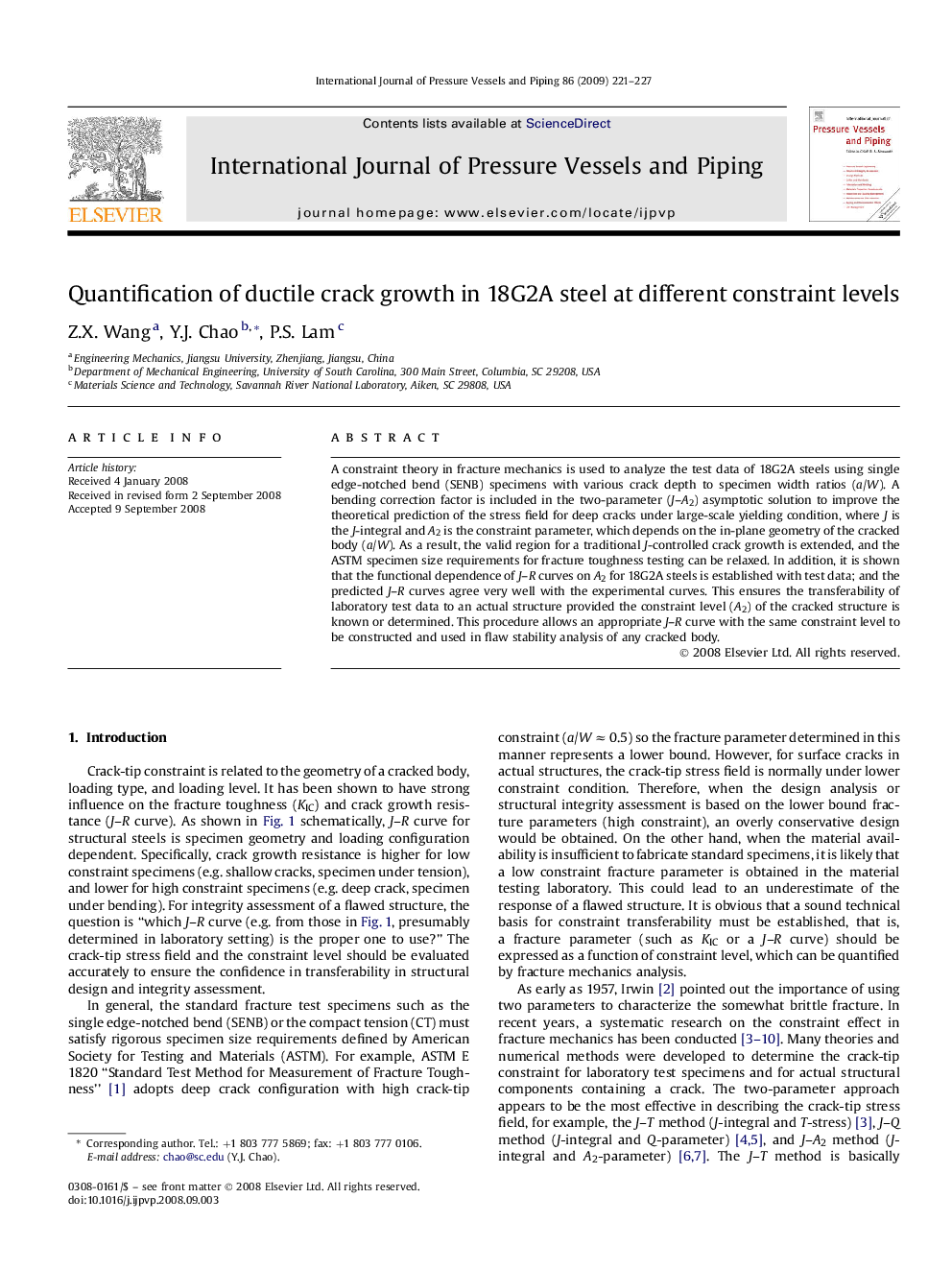| Article ID | Journal | Published Year | Pages | File Type |
|---|---|---|---|---|
| 787924 | International Journal of Pressure Vessels and Piping | 2009 | 7 Pages |
A constraint theory in fracture mechanics is used to analyze the test data of 18G2A steels using single edge-notched bend (SENB) specimens with various crack depth to specimen width ratios (a/W). A bending correction factor is included in the two-parameter (J–A2) asymptotic solution to improve the theoretical prediction of the stress field for deep cracks under large-scale yielding condition, where J is the J-integral and A2 is the constraint parameter, which depends on the in-plane geometry of the cracked body (a/W). As a result, the valid region for a traditional J-controlled crack growth is extended, and the ASTM specimen size requirements for fracture toughness testing can be relaxed. In addition, it is shown that the functional dependence of J–R curves on A2 for 18G2A steels is established with test data; and the predicted J–R curves agree very well with the experimental curves. This ensures the transferability of laboratory test data to an actual structure provided the constraint level (A2) of the cracked structure is known or determined. This procedure allows an appropriate J–R curve with the same constraint level to be constructed and used in flaw stability analysis of any cracked body.
